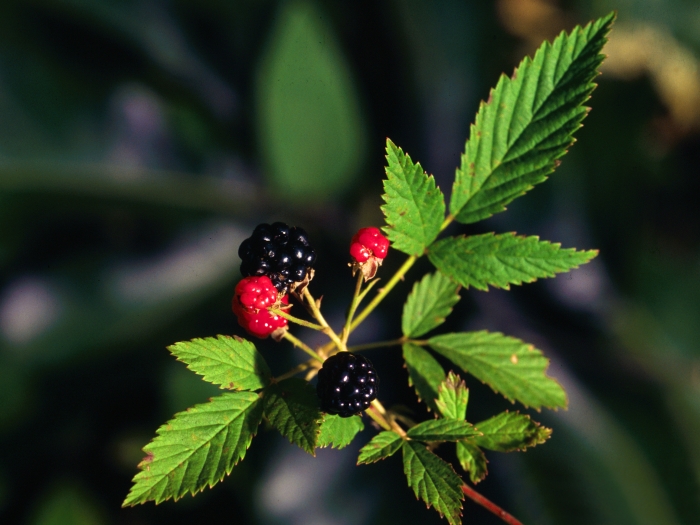Northern Dewberry
(Rubus flagellaris)
Northern Dewberry (Rubus flagellaris)
/
/

James H. Miller & Ted Bodner, Southern Weed Science Society, Bugwood.org
CC BY-SA 3.0
















































Estimated Native Range
Summary
The plant produces showy, five-petaled white flowers, each about one inch (25 mm) in diameter, which open during the day and close at night. Following pollination, these flowers give way to edible drupes that ripen to a tart-sweet flavor. Northern Dewberry is valued for its wildlife-friendly berries and as a natural ground cover. It is used in fruit production, erosion control, and naturalized plantings. This species requires full sun for optimal fruiting but has intermediate shade tolerance. It prefers well-drained soils with a pH range of 5.0 to 7.0 and is hardy to temperatures as low as −23 °F (−31 °C). While it has a low drought tolerance, it can adapt to various drainage conditions. Gardeners should note that the plant can become invasive and its prickles may make handling difficult.CC BY-SA 4.0
Plant Description
- Plant Type: Shrub
- Height: 0.5-2 feet
- Width: 3-0.7 feet
- Growth Rate: Rapid
- Flower Color: White
- Flowering Season: Spring
- Leaf Retention: Deciduous
Growth Requirements
- Sun: Full Sun, Part Shade
- Water: Medium
- Drainage: Fast, Medium, Slow
Common Uses
Bee Garden, Bird Garden, Butterfly Garden, Edible*Disclaimer: Easyscape's listed plant edibility is for informational use. Always verify the safety and proper identification of any plant before consumption., Fragrant, Groundcover, Hummingbird Garden, Low Maintenance
Natural Habitat
Native to open woodlands, forest edges, and fields
Other Names
Common Names: Common Dewberry , Whiplash Dewberry , American Dewberry , Prickly Raspberry , Ronce À Flagelles
Scientific Names: Rubus flagellaris , Rubus procumbens , Rubus geophilus , Rubus subuniflorus , Rubus maltei , Rubus tetricus , Rubus ashei , Rubus camurus , Rubus cordialis , Rubus exemptus
GBIF Accepted Name: Rubus flagellaris Willd.